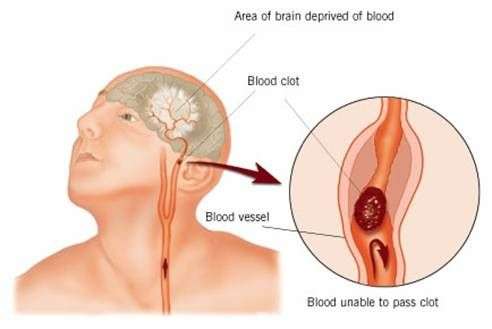In the intricate tapestry of human existence, each heartbeat orchestrates the rhythm of life. Yet, in the blink of an eye, the delicate balance can be disrupted by an unseen assailant – ischemic stroke. Join me on a journey through the corridors of neuroscience as we unravel the complexities of this harrowing condition, combining real-world narratives with stark statistics to shed light on the urgency of understanding and addressing neurovascular disorder

The Unseen Onset
Consider the ordinary morning routine of Emily, a vibrant individual savoring the dawn of a new day. Little did she anticipate the unseen assailant lurking within her cerebral arteries. Ischemic stroke, characterized by the sudden disruption of blood flow to the brain, often strikes with little warning, leaving victims grappling with its profound and immediate impact.
Understanding the Numbers of Brain Ischemia

The statistics surrounding Brain Ischemia are both staggering and sobering. According to the World Health Organization (WHO), stroke ranks as the second leading cause of death globally, responsible for approximately 11% of all deaths. Of these strokes, nearly 87% are ischemic in nature
Source: World Health Organisation
Risk Factors and Vulnerabilities of Ishcemic Event
A myriad of risk factors influences the journey through the terrain of an ischemic event. Hypertension, diabetes, smoking, and obesity emerge as key contributors, shaping the narrative of susceptibility. Understanding these risk factors becomes crucial in developing preventive strategies and interventions.
The Critical Window of Cerebral Infarction

Time becomes a critical factor in the battle against cerebral infarction. Swift and decisive action within the first few hours of symptom onset can be the difference between recovery and long-term disability. The American Stroke Association reports that for every minute a stroke goes untreated, the average patient
Source : American Stroke Association
Advancements in Intervention
The landscape of embolic stroke care is witnessing notable advancements. Thrombolytic therapy, endovascular treatments, and innovative medical technologies are offering new avenues for intervention, transforming the once-dire prognosis associated with this condition.
Also Read Colorectal Cancer : Unmasking the Silent Threat
Empowering Communities Through Education
Beyond the realm of medical interventions, community education emerges as a powerful weapon against arterial thrombosis.
Recognizing the signs and symptoms, understanding the importance of promptly calling emergency services, and fostering a culture of proactive health measures can collectively minimize the impact of ischemic stroke on the landscape.
Conclusion
In the intricate dance of life and health, vascular occlusion emerges as a formidable adversary, demanding our attention, understanding, and rapid response.
Through a blend of personal stories and stark statistics, we navigate the terrain of this condition, uncovering the urgency of timely intervention, the promise of medical advancements, and the power of community education.
Collectively, let us embrace the challenge, advocate for a world where we meet ischemic stroke head-on with resilience, knowledge, and a shared commitment to preserving the delicate balance of life.
Frequently Asked Questions About Ischemic Stroke
Ischemic stroke is a medical condition where blood flow to a part of the brain is blocked, typically due to a blood clot. This interruption in blood supply can result in damage to brain cells.
The primary cause of Thrombotic Stroke( ischemic stroke) is the formation of blood clots or blockages in the blood vessels that supply the brain. Conditions such as atherosclerosis or the presence of a blood clot from another part of the body can lead to these blockages.
Common risk factors include high blood pressure, diabetes, smoking, obesity, and a family history of stroke. Age, gender, and race can also contribute to the risk of experiencing an ischemic stroke.
Yes, adopting a healthy lifestyle can significantly reduce the risk of ischemic stroke. Maintaining a balanced diet, regular exercise, and avoiding smoking and excessive alcohol consumption are essential preventive measures.
Common symptoms include sudden numbness or weakness in the face, arm, or leg, confusion, trouble speaking or understanding, severe headache, and difficulty walking. Prompt recognition of these symptoms is crucial for seeking immediate medical attention.
Diagnostic tests, such as a CT scan or MRI, are often used to confirm the diagnosis of ischemic stroke. Blood tests and other imaging studies may also be conducted to identify the underlying cause.
